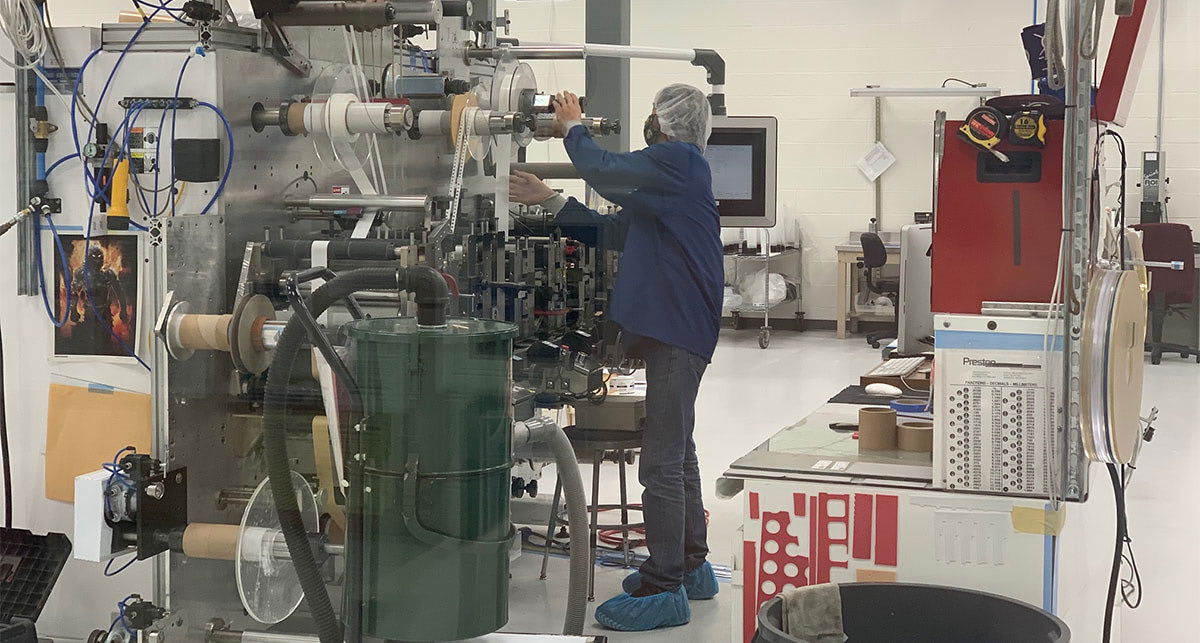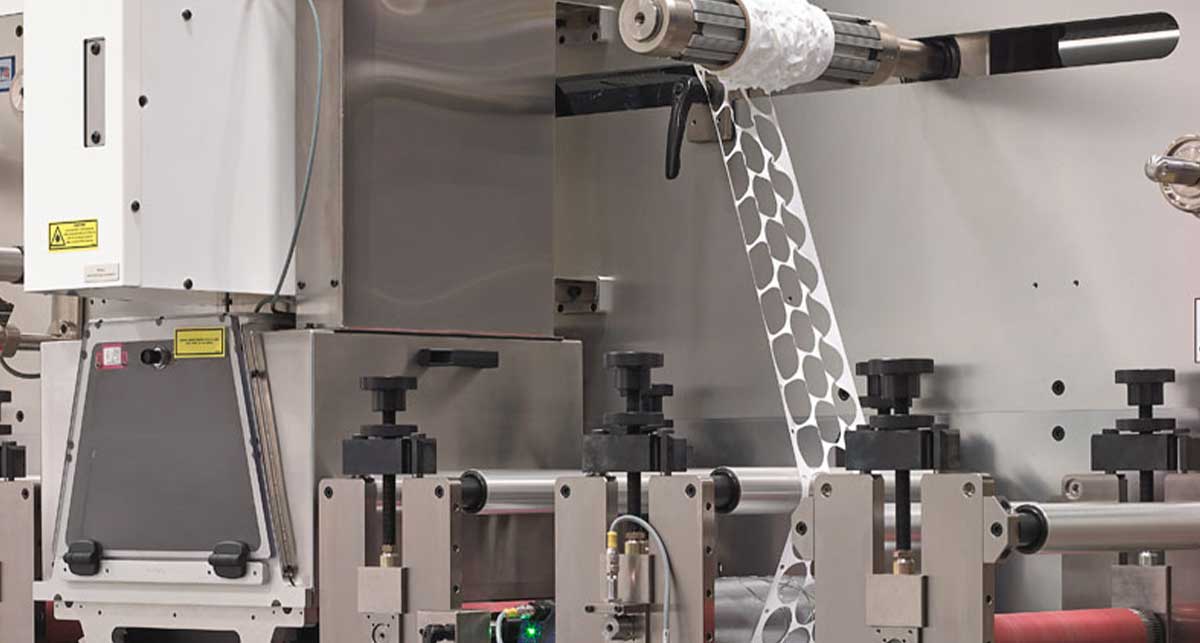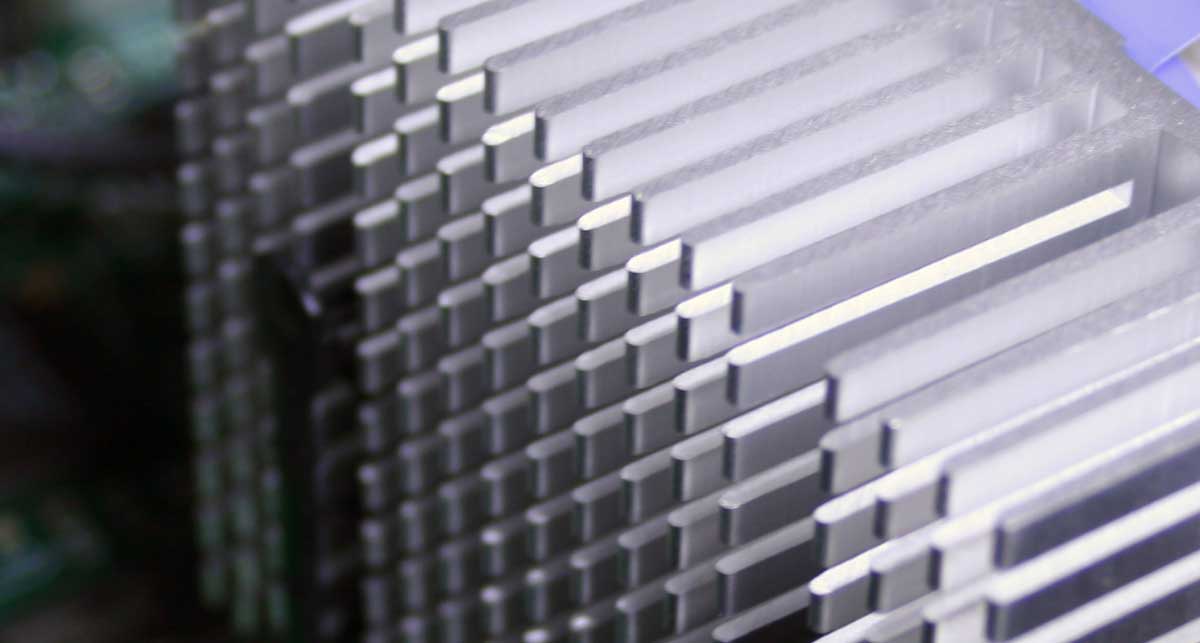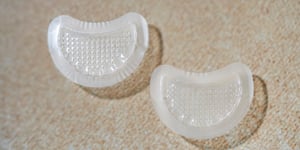Can vaccines and other drug solutions be delivered without an intramuscular injection?
If you said yes, then you’re correct! Cue the round of applause 👏👏👏 Transdermal patches with microneedles can deliver medications through prolonged skin contact, help maintain healthy skin, and assist in patient monitoring.
As a flexible material converter, Strouse die cuts skin adhesive tapes and films for various microneedling applications. While we do not build the needles ourselves, the patches require a safe bond between the adhesive and the skin to ensure a safe delivery of the medication. That’s why we’re explaining how microneedle patches work and how to manufacture them.
What Are Microneedle Patches?
Microneedle patches are a type of transdermal patch embedded with an array of tiny needles, often used to deliver drug solutions. These patches have an adhesive layer that sticks to the skin, as well as needles to puncture it and create microchannels. Because microneedle technology reaches deeper skin layers, penetrating the stratum corneum, epidermis, and dermis to reach the capillaries, it can deliver certain medications that transdermal patches cannot.
Microneedle patches can release drugs consistently over a long period. They rely on prolonged skin contact and pressure to deliver drug solutions in a minimally invasive manner.
EXAMPLES OF MICRONEEDLE USAGE
There are many potential use cases for microneedle patches, including:
- Drug or vaccine delivery
- Disease diagnostics
- Cosmetics
- Patient health monitoring.
In recent years, microneedle patches have also been used to detect opioids and nerve agents, monitor white blood cells, monitor hydration levels, absorb biomarker samples, and even store a patient’s vaccine history under the skin.
Microneedle patches are a safe alternative to shots and oral medications, which makes them ideal for patients at a greater risk of infections or unable to ingest oral medicine. Additionally, some microneedle patches can reduce the frequency of blood draws or catch and track the progression of diseases like bacterial infections, autoimmune disorders, and types of leukemia.
What are Microneedle Patches Made of?
Manufacturers build microneedle patches using stick-to-skin tapes and films, such as silicone, hydrocolloid, hydrogel, and other skin-friendly materials that can embed or carry microneedles. The microneedles are made of metals, ceramics, hydrogels, polymers, glass, and silicon.
What are the Different Types of Microneedles?
.png?width=1000&height=500&name=microneedle%20types%20diagram%20(1).png)
The type of microneedles you use and their material will depend on an application’s purpose, physical location, manufacturability, and drug solution delivery rate.
| MICRONEEDLE TYPE | SOLID | COATED | HOLLOW | DISSOLVABLE | HYDROGEL- FORMING |
|---|---|---|---|---|---|
| Has a drug reservoir |
❌ | ❌ | ✅ | It depends | It depends |
| Remains in the skin | ❌ | ❌ | ❌ | ✅ | ❌ |
1. SOLID MICRONEEDLES
Solid microneedles are used in tandem with transdermal patches. Solid microneedles utilize a two-step application process: The needles puncture the skin to create indents, which are then covered by a transdermal patch for drug delivery. Although they are often imperceptible to the eye, these microchannels let the drug solution seep deeper into the skin.
While solid microneedles are among the easiest to manufacture, their tiny microincisions can lead to infections. They are most often used for drug delivery and cosmetic purposes.
2. COATED MICRONEEDLES
Coated microneedles are embedded in the skin for extended periods so the outer coating dissolves into the epidermis. Once the solution has had enough time to seep through the epidermis, the coated microneedle patch is removed and disposed of.
While coated microneedles reduce the application into a single process, they are limited in how much solution they can deliver based on the thin coating and the amount retained during the initial puncture.
3. HOLLOW MICRONEEDLES
Hollow microneedles can puncture the skin and deliver drugs from a drug reservoir. Thanks to their hollow interiors, these microneedles facilitate the flow of the drug solution down through the needle and into the skin. Like coated microneedles, they simplify the application into a simple, one-step process. Afterwards, you remove them from the body.
Hollow microneedles can cause leakage and clogging; however, they are highly applicable to disease diagnosis and can deliver large doses of drug solutions.
4. DISSOLVABLE MICRONEEDLES
Dissolvable microneedles dissipate once lodged inside the moist inner skin of the human body. When applying an adhesive patch, the needles dissolve in the skin while distributing the solution.
Dissolving microneedle patches are used for drug or vaccine delivery and cosmetic purposes. Unlike solid or coated microneedles, which commonly use silicone or stainless steel, dissolvable microneedles use sugar and hydrophilic crosslinked polymers. As a result, they can be more challenging to manufacture and may take longer to dissolve, requiring extended wear times.
5. HYDROGEL-FORMING MICRONEEDLES
Hydrogel-forming microneedles penetrate the skin and swell when they encounter the body's natural fluids, allowing them to expand and release drugs.
Unlike the dissolvable variety, hydrogel-forming microneedles are removed with the adhesive patch once the drug solution has been distributed. They are most commonly used to deliver hydrophilic drugs like caffeine and high-dose medications like ibuprofen.
Microneedle Patch Production
Building any product begins with a unique design transformed into a technical drawing. Once you have an accurate drawing, contact a microneedle manufacturer for sample materials and a converter to test accurate prototypes, given your desired measurements.
As a converter, we purchase rolls of material from microneedle manufacturers to print, laminate, and die cut. However, we don’t manufacture the needles themselves. The final result will involve testing and clinical trials on your end to verify whether the needles have the right mechanical properties, given the skin’s elasticity.
In some cases, larger devices with microneedles may require automatic placement, which would stick a strip of needles (preloaded with the drug solution) onto an adhesive patch.
SAFETY AND STERILIZATION
Adhesive patches within hospitals must remain free of biological waste or excess particles, so they are processed in an area known as a Clean Room. Clean Rooms are manufacturing environments that match a high standard of particle control and significantly reduce biological contamination. They help prevent false diagnostic results and reduce product sterilization later on.
Building Skin Adhesive Parts with Strouse
For over 38 years, Strouse has teamed up with specialized material suppliers to build complex parts for clinical, laboratory, and consumer use. Partnering with a manufacturer early in the design process will ensure your production is time and cost-efficient.
If you’re building adhesive products, our team will help combine the different elements, such as the skin adhesive and microneedle array.
Reach out to build your skin adhesive design and create a consistent, high-quality solution.
To learn more about skin-friendly adhesives and medical applications, visit our Learning Center.
Originally published: June 26, 2023








